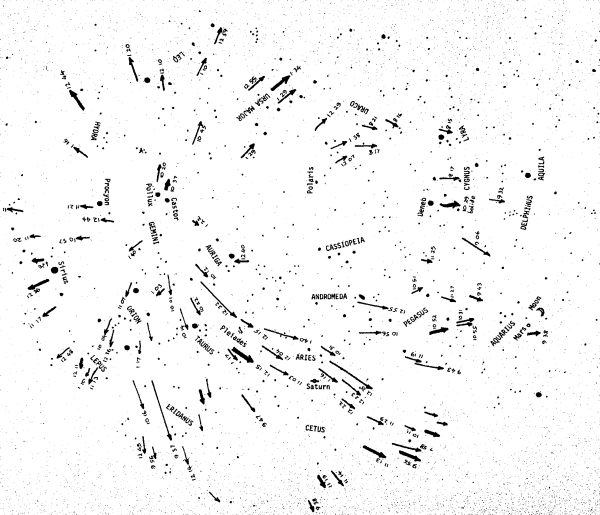The night between Dec. 13 and 14 should be the best time to see the meteors that radiate from Gemini into all parts of the sky. There can be from 50 to 130 an hour, though this year the Last Quarter Moon comes up in the east about midnight, making the sky bright enough to mask perhaps the fainter half of the meteors.
This stream of “shooting stars” not only is the most reliably abundant in our times (having surpassed the famous Perseids of August since about 1960) but is convenient in that it comes in from fairly directly outside the Earth’s orbit; thus its radiant in Gemini is in the sky all night, though highest about 2 AM. Unlike showers that have fairly narrow peaks, the Geminids have a “plateau,” predicted to be from about Dec. 14 19h UT (2 PM in eastern North America) to Dec. 14 17h UT (12 noon EST). Thus all of the night of Dec. 14/15 falls within the “plateau” for both Europe and North America. Though 2 AM may be best in that Gemini is in the middle of the sky and fewer meteor trails may be under the horizon, the interference of the Moon may limit the best time to before midnight.
This great annual shower comes on nearly the longest night of the year, so the idea occurred to me of making a Midwinter Star Vigil of it, logging Geminids through the night and also watching for the stars that set first in the evening to rise on the other side of the world before the night’s end. When I did this it turned into as foolhardy an escapade as my recent fall into a river. I won’t tell the slightly gruesome story (www.universalworkshop.com/Litfoam/Glide.htm) again, but here is the Geminid plot I made.
Yes, it looks poor, because I don’t have the original drawing and have had to scan the version printed in Astronomy magazine to accompany an article. It has a gray screen of dots, I’ve “despeckled” it as best I can, but I’m afraid many pseudo-stars remain.
What I intended to do that night was to pencil each meteor’s track in a star atlas, with a key number, then write, on paper that I had prepared with columns, the key number, time, magnitude, color, and anything else such as whether the meteor bent or split or exploded or left a train. But the meteors came too fast, there was no time to fumble with atlas or prepared sheets; I took to drawing for each meteor a shorthand diagram, an arrow from its beginning-point to its end among the constellations, like this.
Again, scanned from the version of my sketch printed in the magazine: a meteor that I thought ranked as a bolide (I probably meant it flared up before vanishing) and that crossed Cygnus. You recognize that cross-shape with Deneb at the top as Cygnus, don’t you? Doing this is a great way to test and stretch your knowledge of the constellations. I spent the next day transferring these hundred or so sketchlets to a large map and thus finding that my arrows did radiate (allowing for map projection) from Gemini. See if you can find any arrows at angles different enough that they must have been not Geminids but sporadic meteors.



I like Gemini because under dark enough skies it actually looks like what it’s supposed to. Once can easily make out a stick figure of two heads, arms out, perhaps on each others shoulders, and their legs below, one giving a slight side/back kick. Super. Forecast for the NY area seems pretty good. So looking forward to this one.
Yes! Marble, Astro Cat, Dave and I will be looking up. The skies are crystal clear here in the southern U.S. Thanks for the excellent article on the showers tonight!